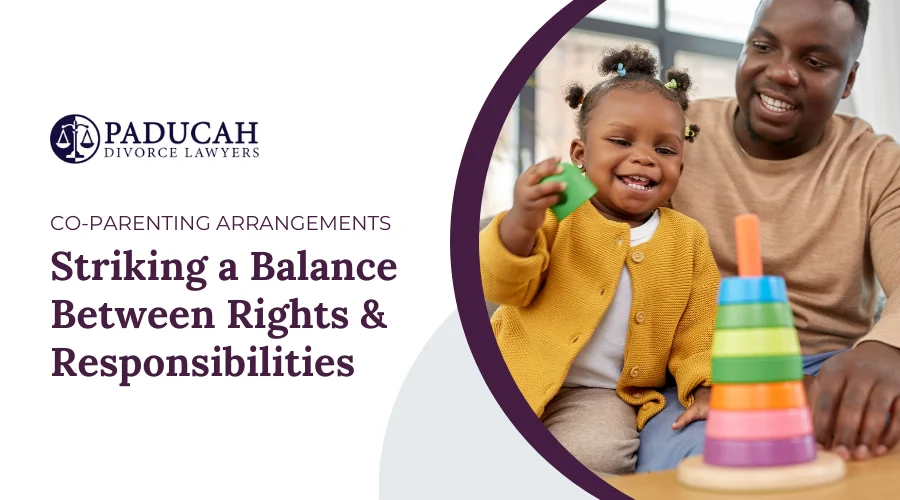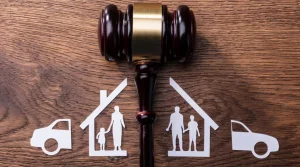Child custody is a severe part of family law, where we determine parents’ rights and duties for their kids. Understanding the kinds of child custody is important to make smart choices focusing on what’s best for the child. In this blog, we’ll talk about the different types of child custody, like legal and physical custody, and look at the good and not-so-good things about sharing physical custody. Delve deeper into our legal services by scheduling a complimentary initial consultation with the Paducah Divorce Lawyer.
What is Legal Custody?
Legal custody is a big part of a parent’s job, and it’s about making important decisions that matter to the child. This includes things like school, health, and what the child learns about religion. The parent with legal custody has the power to influence the child’s beliefs, values, and the path they take in life.
Unlike physical custody, which is about where the child lives, legal custody is more about the child’s thinking, feelings, and what’s right or wrong. It helps set the rules for good parenting by deciding who guides the child through important parts of life.
Sole Legal Custody
Exclusive legal custody is a legal agreement that gives one parent the sole power to make crucial decisions about a child’s upbringing. In such instances, the parent granted exclusive legal custody has the sole right to decide matters related to education, healthcare, and religious upbringing.
This custody arrangement is usually granted when one parent is seen as better at making responsible and well-informed decisions for the child’s well-being. Additionally, it may be awarded in cases marked by a history of ongoing conflicts between parents to create a stable environment for the child by assigning decision-making responsibilities to the more capable and dependable parent.
Joint Legal Custody
Joint legal custody is when parents work together to make important choices for the child. This teamwork involves talking openly and working as a team, always considering the child’s best interests. With joint legal custody, both parents are seen as important in shaping the child’s growth.
It understands that both parents have good ideas, and by working together, they can make fair and balanced decisions. This way of sharing responsibilities stresses the importance of having a positive and cooperative relationship between parents, which is crucial for the child’s overall well-being and development.
Physical Custody
Physical custody is important in deciding where the child lives daily and how much time they spend with each parent. It’s not just about making legal decisions; it’s about the real, everyday experiences of the child. In sole physical custody cases, the parent with custody is where the child lives most of the time, and the other parent might get visitation rights.
With joint or shared physical custody, the child spends much time with both parents. This helps keep things stable and connected, ensuring the child has a strong relationship with both parents daily.
Sole Physical Custody
Sole physical custody means one parent is in charge of where the child lives and takes care of them daily. The other parent, who doesn’t have custody, usually gets visitation rights. This happens when one parent is better at providing a stable and consistent home for the child.
Courts might decide on sole physical custody if they worry about the other parent being unable to create a safe and good environment for the child. The goal is to ensure the child’s needs are met and they grow up in the best place for their physical and emotional well-being.
Joint or Shared Physical Custody
Shared or joint physical custody means the child spends much time living with both parents. This plan is made to help the child have a strong and ongoing relationship with each parent. The idea is to create a good balance where the child regularly shares experiences and responsibilities with both parents. This way, the child feels supported and secure in their day-to-day life, contributing positively to their emotions and overall well-being within the family.
Co-Parenting Plans
Co-parenting plans are like detailed maps that carefully show when and for how long the child will be with each parent. These well-thought-out schedules are crucial for keeping things stable and consistent in the child’s life, creating a routine that helps their overall well-being.
Co-parenting plans clarify everything by outlining who gets to be with the child when visits happen and what responsibilities are shared. This way, there’s less chance of confusion or arguments between parents. These plans also help parents talk effectively, working together to ensure the child’s needs come first and creating a friendly co-parenting relationship.
Clarifying Rights and Responsibilities
Ensuring both parents know their rights and duties is crucial in any custody agreement. Legal custody is about who makes important decisions for the child, like choices about school, health, and religion. On the other hand, physical custody is about where the child lives and how much time they spend with each parent.
To have a good co-parenting relationship, both parents must get these things. Clear co-parenting plans help a lot by spelling out details like who gets the child when, visitation rights, and what each parent is responsible for. This clarity is not just good for the parents; it’s important for keeping the child emotionally stable.
Pros:
- Shared Responsibility: Both parents actively participate in the child’s upbringing.
- Continuity: The child maintains consistent relationships with both parents.
- Equal Time: Joint physical custody allows for a fair time distribution between parents.
Cons:
- Logistical Challenges: Coordinating schedules and transitions can be complex.
- Conflict Potential: If there is ongoing tension between parents, joint physical custody may lead to disputes.
- Stress on the Child: Frequent household moves may be emotionally challenging for the child.
Navigating the waters of child custody requires careful consideration of various factors. Understanding the distinctions between legal and physical custody and the nuances of sole and joint custody is crucial for creating arrangements that prioritize the child’s well-being.
It’s recommended to seek professional legal advice to tailor custody arrangements to the unique needs of each family, ensuring a positive and stable environment for the child’s growth and development.
Another awesome article about The Different Types of Physical Custody






